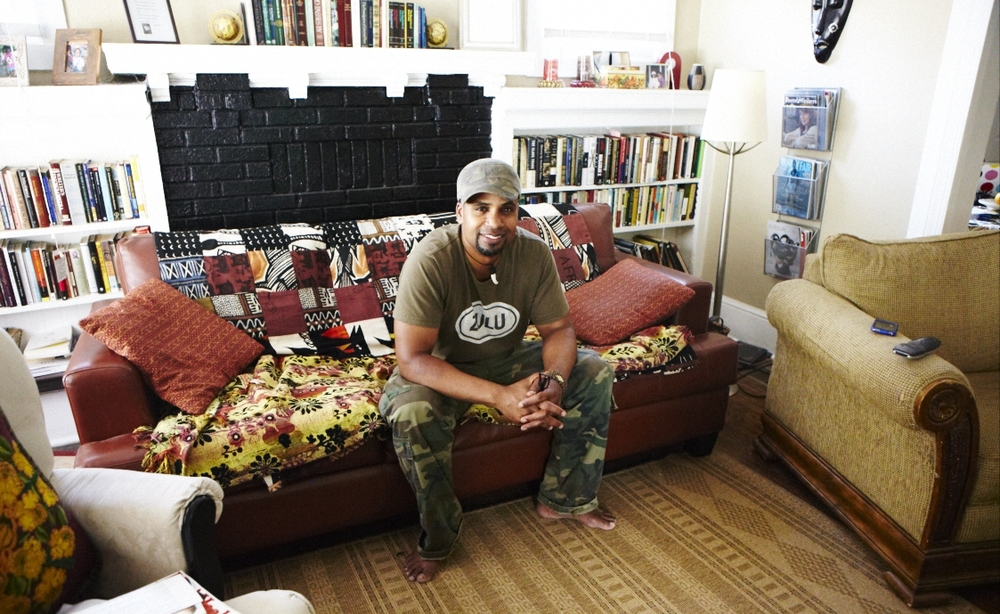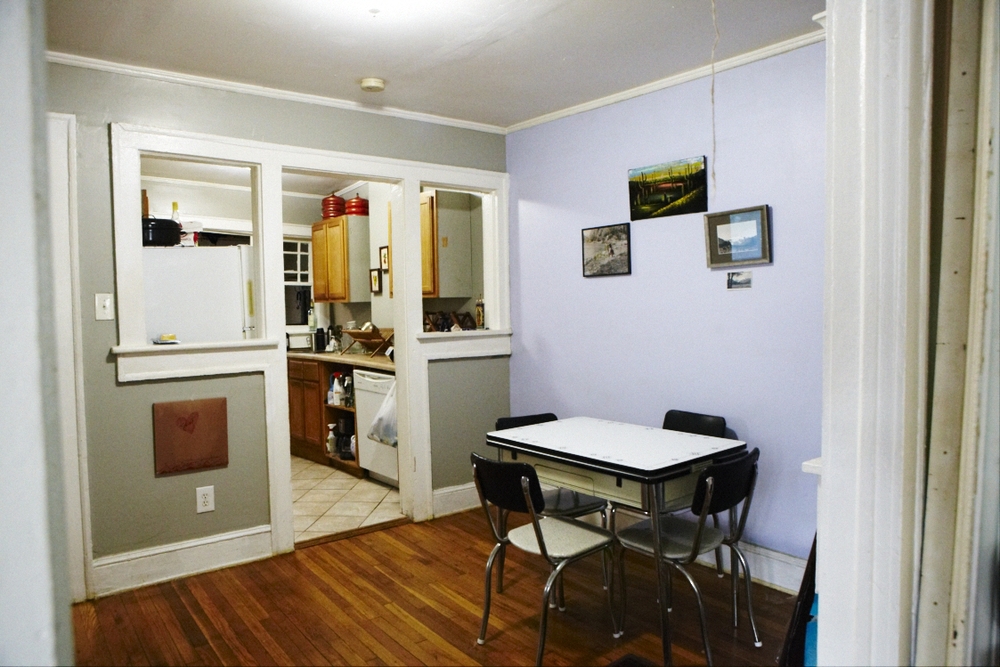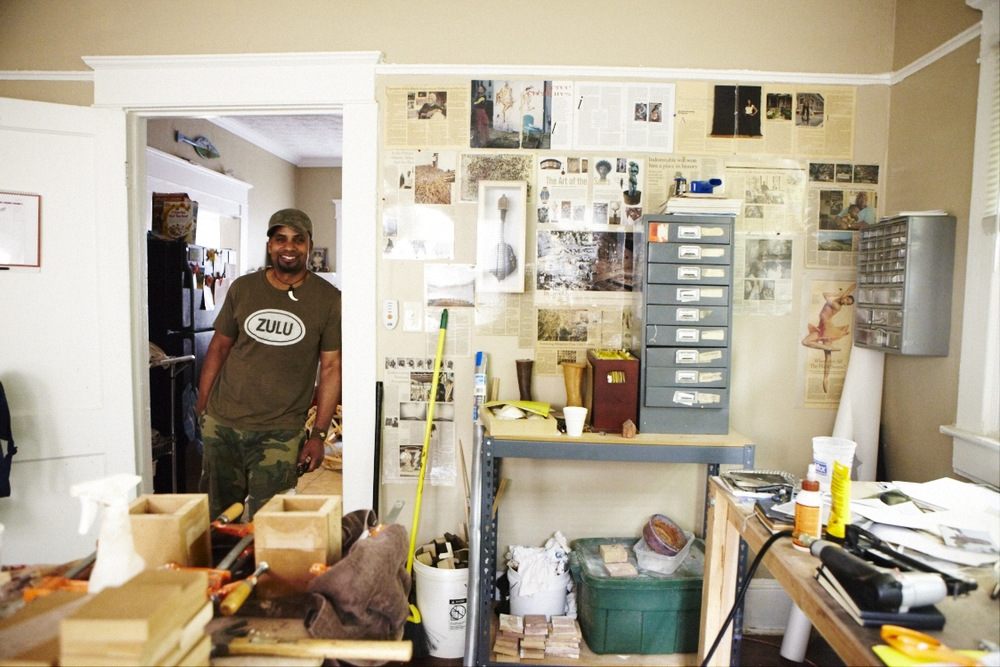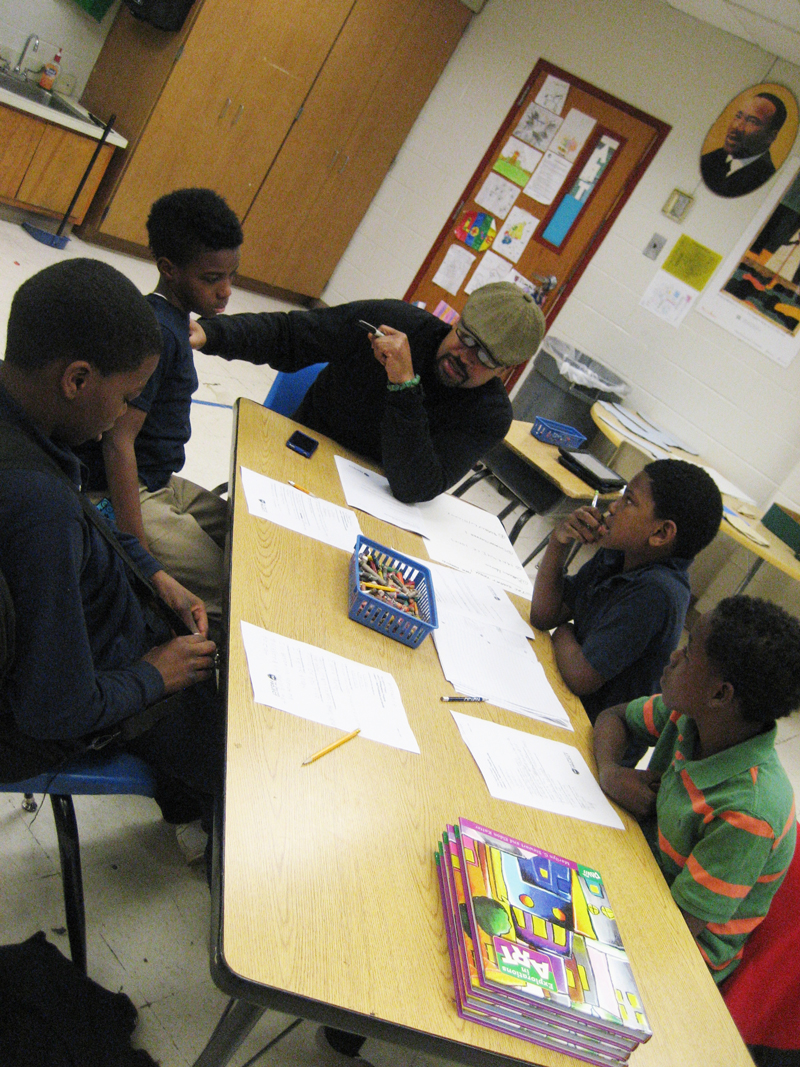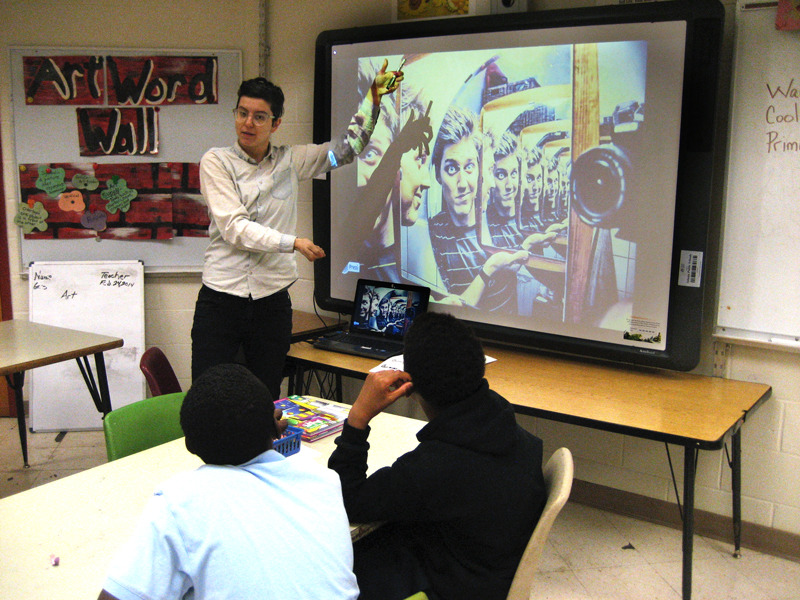Through its Artist-In-Residency program, The Creatives Project has provided places for up-and-coming local artists to literally live and breathe their creative processes. TCP proudly announces its newest group of resident artists, Spencer Murrill, Megan Mosholder and Namwon Choi. As they get settled into their new roles as resident artists and Community Arts Program mentors, the trio shares its thoughts on how TCP will help them achieve their creative goals.
2014-16 Housing Residents: Spencer Murrill, Megan Mosholder, and Namwon Choi outside the Metropolitan Apartment
How will becoming a TCP artist-in-residency most benefit you as an artist?
Namwon: The time immediately after graduate school is a crucial time for an emerging artist. The artist discovered his/her voice, but if he/she doesn’t continue to develop, the voice is lost. As becoming an artist who does not settle for nostalgia of the painting’s tradition and as someone who is early in her career, I am perfectly positioned to take full advantage of all TCP artist-in-residency provides. The history of painting is a source of knowledge that can be used to create something new. TCP artist-in-residency provides the physical, financial and temporal space to push the development of my voice.
Megan: I believe that there is strength in community. Being a TCP artist ensures that I will be more closely united with the Atlanta artist community and through that network, my practice will be nurtured and have space to grow.
Spencer: One of the primary challenges for a working artist is to acquire the time, money, and space to make their work. The TCP residency program provides very affordable housing which relieves me of a lot of these pressures. The other component of TCP that I am excited about is involving myself with the larger art community in Atlanta. Working independently for long stretches can be very isolating, and I intend to become more involved with a growing community of interesting people.
As a TCP artist-in-residency, how do you plan to utilize this opportunity? How will you represent TCP? What personal projects do you have planned to complete during your residency?
Namwon: During my TCP residency, I would like to further my exploration in self-portraiture. I have found cross culture and cross history, there seems to be a difference between commissioned portrait and self-portrait. The artist in self-portrait is metaphorical; sacrificing the real to show what is true. I intend to document the evidence of my existential journey by assembling paintings of close-up images of the skin of underappreciated body parts, especially my hands and feet with studio objects. I will also be focusing on generating new and original work and engaged in a contemporary dialogue with peers and also making connection with network of professionals to share my findings and in progress work with local audience.
Megan:I have been fortunate enough to not only receive studio space through the TCP residency program but also a living space as well. Moving into the city will allow me to more easily attend art shows and spend time with other Atlanta creatives. After living without a studio space for the past year, I cannot wait to get into my TCP studio/home and get to work!
One of the ways I hope to represent TCP is through community outreach: I look forward to working with Atlanta’s youth and encouraging them to use art as a way to express themselves.
Some of my personal projects include a new series of paintings that I have been dreaming up but have not had the space (until now!) to create them. I am also interested in exploring new, different and permanent materials with the intention of building future large-scale, permanent public installations.
Spencer: The biggest step for me as a TCP resident is to start educating. I've always been interested in teaching and youth outreach is a great place to start. I am also in the process of putting together several workshops for adults. Gallery exhibitions, public art, and puppet theater are my areas of focus creatively right now. I am equally passionate about all three, and although they seem disparate, what I learn in one area always informs what I am capable of in another. I'm hoping to utilize what I can learn from others involved in this project as well. The projects I am working on now are my first solo gallery exhibition, a proposal for a public sculpture, and a short piece for a variety puppet show.
What do you know about the other artist-in-residency? Do you anticipate possibly collaborating artistically since you'll be sharing the housing space?
Megan: Collaboration is always an option for me. When you look at artists throughout history, they were always talking, working and collaborating, whether it was the creation of a new manifesto or simply influencing one another’s body of work. I do not know much about the other residents but I look forward to working with and learning from them.
Spencer: My future roommate Megan Mosholder has a lot of experience in the gallery and installation realm. Much of her work is site-specific and ephemeral. It seems to have as much to do with light and space as it does form. My work has mostly been about bending the more traditional formats of object-making and graphic design. I think there will be a mutual benefit technically and artistically to us living together, and I have a few ideas about collaborating with her style that I think could be very interesting.
How important do you think programs like this one are to the creative process and the local art scene?
Namwon: I found myself most productive when I empty my creative vessel in order to fill it with new experiences and challenges. To let my creativity flow, the knowledge I have acquired through my studio practice must be shared. This process clears my mind for the next inflowing innovative ideas for my art to come. The meaning of the word, ‘teacher’ in Korean is she who learned ahead. The TCP Outreach program is to fill in the gap between local artists and the local audience those who in need of artist as educators.
Megan: I think residency programs are hugely important over all because they give artists time and space to work and think but also they give artists a sense of community. Without residencies I would feel very lost, alone and misunderstood. Residencies have not only nurtured my practice but my sense of self as an artist. The overall network I have developed as a result of my residency attendance has given me some of the strength I have needed to preserver in this very difficult state of establishing my emerging career.
Spencer: Building a career as an artist can be a difficult process. It is oftentimes difficult to know how to market oneself and what opportunities to invest time into. I consider programs like TCP to be a gesture that a lot of obscure emerging artists benefit from. It allows entry into a community that supports them, and gives them a chance to give back. Being away from the protective incubator of college and off on your own chasing down work it can be a challenge. Programs like this remind me that people do care about art, what I can bring to it, and that the energy I put out always comes back in the best way.
interview by Jonathan Williams / WrestlingWithPopCulture
photography by: Neda Abghari




